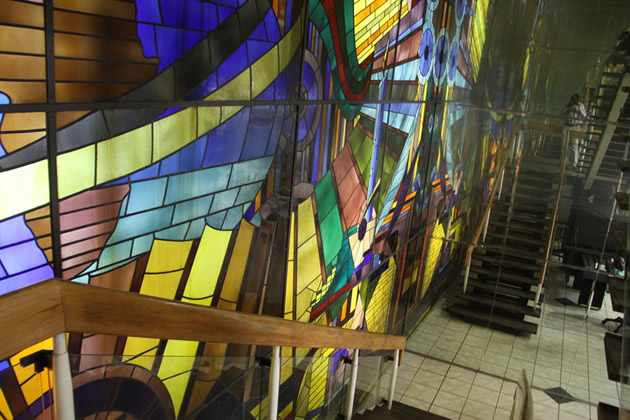Harare’s 125-year history book launched


The book notes that the 54-square metre illuminated glass mural in the main entrance hall of Herald House was made and assembled in seven weeks. Initially the wish was to depict the history of printing but it was subsequently decided it should exhibit news, its distribution and subsequent gathering and publishing. — (Picture by Tawanda Mudimu)
Business Editor
A book showcasing Harare’s development during its 125-year history has been launched. The book, Urban Evolution: A photographic history by publisher and market commentator Jonathan Waters covers the period from the 1950s to present.
It mostly follows the development of the central business district and is focused more on the economics that drove this in the various periods.
The book, which was launched on the same day (September 12) Harare commemorated its 125-year existence allows the reader to approximate their recollection given its various landmark buildings.
The rapid transformation of Harare in the 1950s during the Federation era made the city almost unrecognisable when compared with photographs from early days.
Some of the notable historical landmarks in the book include the Dutch Reformed Church in Samora Machel Avenue and the Presbyterian Church along Park Lane.
It also gives detailed accounts of the various buildings in the city centre including Herald House.
Herald House was completed in May 1963 and was the last major privately funded building constructed before the end of the Federation. It was built on the site of the old City Club.
Herald House is a combination of two buildings as it was wedded to the older structure on the then Gordon Avenue (now George Silundika Avenue), which had been built to accommodate the former Evening Standard.
The book also notes that quasi-Government institutions unleashed a host of projects at the end of the 1980s including Zimre Centre, Hurudza House and Construction House.










Comments